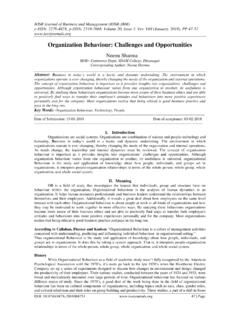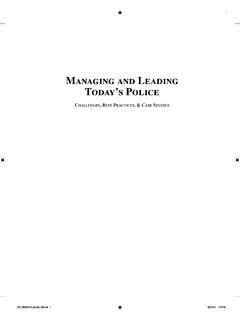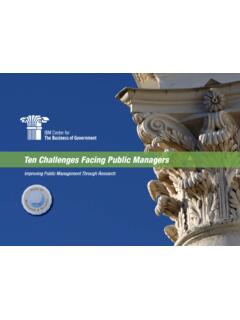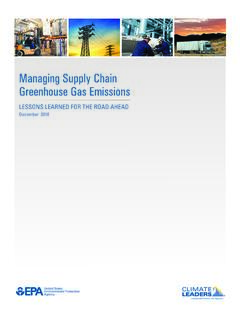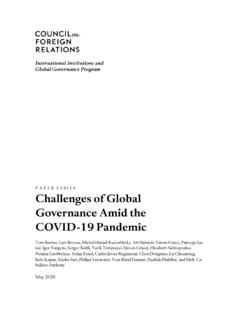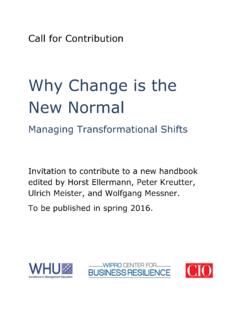Transcription of Challenges and opportunities to improve the livelihoods of ...
1 2015 Challenges and opportunities to improve the livelihoods of smallholder farmers in the Pacific Island Countries This brief contains: Production and marketing Challenges of smallholders farmers Available opportunities for the improvement of smallholders farmers production and access to markets Recommendations to mitigate smallholder farmers production and marketing Challenges BRIEF 1 This brief has been developed by Shukrullah Sherzad (Agribusiness -Junior Professional Officer, FAO-SAP), with contribution from Tim Martyn (Policy Officer, FAO-SAP) Agriculture in the Pacific Island Countries (PICs) is largely dependent on smallholder family farms. Smallholder family farmers often have access to less than two hectares (ha) of land and depend on labour supplied by household members, and few other inputs.
2 Smallholder production strategies typically utilize a mixture of root crop, vegetable, fruit and livestock varieties for own consumption, sale and gifts, supplemented by income from cash crops such as copra, cocoa, coffee and vanilla. PIC smallholders are also extremely vulnerable to natural disasters, and price and weather variability. The Challenges of poor economic geography (including small market size and large distances between internal and export markets), costly marketing infrastructure, and lack of domestic value-adding opportunities have reduced the competiveness of PIC smallholders in domestic and niche export markets. These smallholders also face strong competitive pressures due to their lack of access to improved inputs such as planting material and labour-saving machinery, and poor access to credit.
3 This has decreased their capacity to consistently meet the supply, quality and food safety standards required by modern retail outlets. In addition, consumers diets patterns have changed toward less expensive imported and convenience food products. Constraints to market integration: Smallholders face some constraints in seeking to take advantage of both domestic and export market opportunities1: (a) Constraints that inhibit production and consistency of supply: Small farmers are often unable to produce sufficient quantities to fully meet market demand, leading to lost income and to a loss of competitiveness. As mentioned before production problems include: lack of suitable inputs resources, urban drift of labor from agriculture sector, low foreign investment in production and less competition with imported cheaper convenience products.
4 Inconsistency in supply has shifted supermarkets and resorts demand toward imported products. (b) Constraints that increase market costs: Poor economic geography (remote location from markets, small land and population mass, large internal distance between islands) 4, inadequate supporting policies, weak institutional support, unreliable infrastructures and services: raises processing and marketing costs, leads to deterioration in the quality of goods and provide market opportunities for imported products in the domestic markets. (c) Constraints that reduce market access: Meeting international sanitary and phytosanitary (SPS) legislation and private quality certification standards which are required by modern retailing system, can be a major challenge for smallholders7. Smallholders (those who have capacity to export) must be able to export 1 FAO Agri-food system brief: Overcoming constraints to agricultural exports 4 Challenges and constraints 2 products that meet the minimum standards required by importing countries/enterprises and should be price competitive in niche export markets.
5 Without the assistance of private-public sector and donor agencies, it is somehow difficult for stallholders to access niche export markets. (d) Constraints that break market relationship and linkages: Though both sides have an interest in doing business together, smallholders and large companies in many cases find it difficult to enter in a productive business relationship. Often, the two sides lack the mutual trust and access to one another required for successful cooperation. Structural Challenges including a lack of information, a lack of skills and knowledge, insecurity, resource scarcities, and gaps in infrastructure stand in the way. Trust and access are basic requirements for success in any business relationship2. Limited access to capital and input resources: Lack of access to credit has reduced the competiveness of smallholders relative to imported products in domestic markets, and in export markets4.
6 Although there are some development/commercial banks and micro-finance schemes providing loans to smallholders, their limited knowledge of the sector, remoteness from rural areas, high collateral requirements and resulting high interest rates given their risk perception of the industry, have made it challenging for small-scale farmers. Smallholders need capital and financial resources to buy inputs, and invest in equipment, storage facilities, animal stock and necessary services3 for intensification of crop production. Limited access to financial resources with short terms makes it hard for smallholder to make investments that don t pay off immediately [for example investment in machinery or long-term cash crops (such as trees)] the agriculture sector is often perceived as high risk by many financial institutions, smallholder access to loans, is often limited.
7 Financial constraints are more pervasive in agricultural production, which forms the basis for agribusinesses and agro-industries4. Lack of land tenure security and formal property titles make it more difficult for smallholders to use their land as collateral when attempting to access loan capital. Diversification: Small farmers have the potential to raise their incomes by switching from low quality bulk produces to high-value agricultural produces, but they face a number of constraints. Since high-value agricultural commodities are perishable, there is significant volatility in their prices, and thus significant market risk. In addition, small farmers have low volumes of marketable surplus and their farms are mostly located in remote areas with poorly developed infrastructure and transportation, leading them to face high transaction costs and risks in production and marketing of such commodities5.
8 For niche export markets smallholder need quality certifications (such as 2 GIZ-Growing business with smallholders A guide to inclusive agribusiness 3 2013. Five reasons why companies and small-scale farmers are not in business together. HWMIIA. Available from: [Access 12th Jan 2015] 4 FAO-Enabling environments for agribusiness and agro-industries development - Regional and country perspectives 5 IFAD ( ). 2009. Smallholder Farming in Transforming Economies of Asia and the Pacific: Challenges and opportunities . Available from: [Access 18th Jan 2015] 3 BOX-1: One example of farmers organizations in the PICs is PGS (Participant Guarantee System) group. It is a group of 12-15 (or more) farmers with specific principles and responsibilities run in Fiji who sells their collected produces on good prices.)
9 (Source: PARDI, 2014)7 organic and GAP-Good Agricultural Practices) which are costly and difficult to implement, particularly for small farmers. opportunities Contract farming6: Contract Farming (CF) can address some constraints to small-scale productivity and can be institutional solution to the problems of market failure for credit and information (CF benefits on Box-2). Imbalance power between farmers and companies, violation of the terms of the agreements, lack of contract enforcement and social differentiation can be still some challenges10. Farmer organizations for the Chain coordination: Forming small-scale farmers cooperatives, associations, groups (for example PGS7) and societies can reduce high transaction costs and market risks; increase returns, products quality; improve bargaining power and obtain needed services8.
10 Production for domestic and tourism markets: PICs can produce quality and healthy food products for its domestic and tourism markets by investing in market-oriented farming system and agrotourism sector development. Producing for domestic markets will decrease food dependency, poverty in rural communities and non-communicable disease caused by low quality imported food. Access to inputs and resources, inadequate infrastructures, intuitional policies and services are some Challenges of smallholders farms to compete with imported products in the domestic markets. High value produces for niche export markets: Producing origin based, certified, and premium quality traditional products for niche export market can provide some opportunities for the PICs to compete with low quality bulk products.










